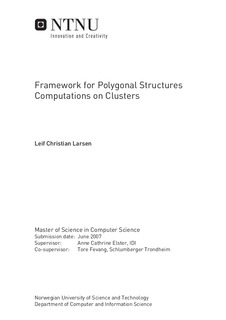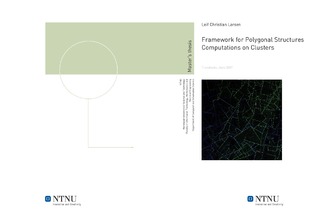| dc.description.abstract | Seismological applications use a 3D grid to represent the subsea rock structure. Many computations, such as detecting layers of rock in the seismic, can be done using the 3D grid exclusively. However, some algorithms for detecting vertical dislocations in the seismic require computations over a discretized polygon surface imposed over the 3D grid to assist geophysicists in interpreting the seismic data. When using seismological applications on clusters, the 3D grid data is distributed between several cluster nodes. This thesis considers how algorithms involving discretized polygon surfaces can efficiently utilize the parallelism provided by clusters, and provides a general framework such algorithms can utilize. The framework consists of three main parts: 1) efficient caching and transfer of voxels between cluster nodes, 2) efficient discretization or voxelization of polygon surfaces, and 3) efficient load-balancing. First, three algorithms for caching and transferring voxels between nodes are introduced. The strategy which only transfers necessary polygon voxels is shown to be superior in most cases for our workloads, obtaining a speedup of 24.28 over a strategy which caches the bounding volume of the polygon, and a speedup of 2.66 over a strategy which transfers small blocks surrounding each polygon voxel. Second, a new voxelization algorithm which may be suitable for Graphics Processing Units (GPUs) and multi-core CPU implementations is presented. On the GPU, a speedup of 2.14 is obtained over the corresponding algorithm on the CPU. For multi-core architectures without shared memory buses, a speedup of 2.21 is obtained when using 8 cores. Finally, three algorithms for load-balancing the computations are introduced and future work is discussed. Our load-balancing algorithms achieve a speedup of 5.77 compared to not using any load-balancing for our workloads. | nb_NO |

